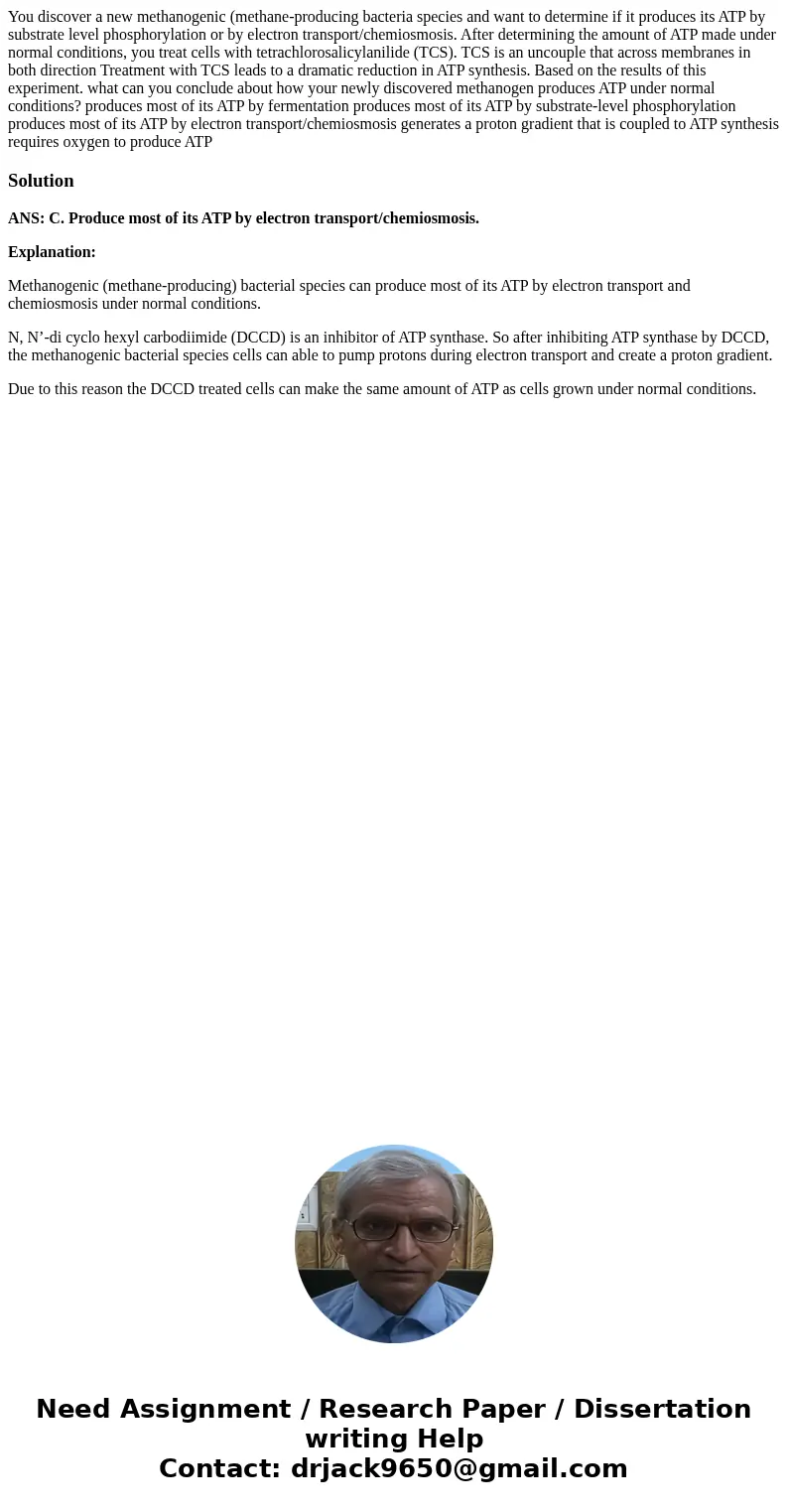You discover a new methanogenic methaneproducing bacteria sp
You discover a new methanogenic (methane-producing bacteria species and want to determine if it produces its ATP by substrate level phosphorylation or by electron transport/chemiosmosis. After determining the amount of ATP made under normal conditions, you treat cells with tetrachlorosalicylanilide (TCS). TCS is an uncouple that across membranes in both direction Treatment with TCS leads to a dramatic reduction in ATP synthesis. Based on the results of this experiment. what can you conclude about how your newly discovered methanogen produces ATP under normal conditions? produces most of its ATP by fermentation produces most of its ATP by substrate-level phosphorylation produces most of its ATP by electron transport/chemiosmosis generates a proton gradient that is coupled to ATP synthesis requires oxygen to produce ATP
Solution
ANS: C. Produce most of its ATP by electron transport/chemiosmosis.
Explanation:
Methanogenic (methane-producing) bacterial species can produce most of its ATP by electron transport and chemiosmosis under normal conditions.
N, N’-di cyclo hexyl carbodiimide (DCCD) is an inhibitor of ATP synthase. So after inhibiting ATP synthase by DCCD, the methanogenic bacterial species cells can able to pump protons during electron transport and create a proton gradient.
Due to this reason the DCCD treated cells can make the same amount of ATP as cells grown under normal conditions.

 Homework Sourse
Homework Sourse